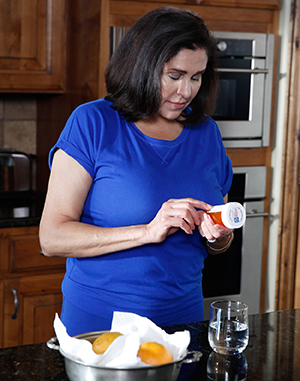Managing Post-Op Pain at Home: Medicines
Pain after an operation (post-op pain) is common and expected. These guidelines can help you stay as comfortable as possible.

Taking pain medicines
-
Take only the medicines that your healthcare provider tells you to take.
-
Take medicines on time. Don't take more than prescribed.
-
Take pain medicines with some food to prevent an upset stomach.
-
Don’t drink alcohol while using pain medicines.
-
Don't drive while taking opioid pain medicines.
Types of pain medicines
Non-opioid
-
Check with your healthcare provider before taking any over-the-counter (OTC) pain reliever in addition to or instead of your prescribed pain medicine.
-
Non-opioids include OTC acetaminophen and ibuprofen and some prescription pain relievers.
-
All relieve mild to moderate pain, and some reduce swelling.
-
Possible side effects include stomach upset and bleeding. High doses may cause kidney or liver problems.
Opioid
-
Opioids are available only by prescription.
-
Opioids ease moderate to severe pain.
-
Possible side effects include stomach upset, nausea, drowsiness, rash, and itching.
-
Opioids may cause constipation. To help prevent this, eat high-fiber foods and drink plenty of water.
-
Your healthcare provider may recommend a stool softener.
-
Don't drive, make important decisions, or operate machinery while taking opioids.
When to call your healthcare provider
Call your healthcare provider or seek medical attention right away if you notice any of these symptoms:
-
Nausea, vomiting, diarrhea, constipation, or stomach cramps
-
Breathing problems or a fast heart rate
-
Feeling tired, sluggish, or dizzy
-
Skin rash or other allergic symptoms
-
Pain that is not eased with the pain medicine
Online Medical Reviewer:
Jonas DeMuro MD
Online Medical Reviewer:
Raymond Turley Jr PA-C
Online Medical Reviewer:
Tara Novick BSN MSN
Date Last Reviewed:
3/1/2022
© 2000-2025 The StayWell Company, LLC. All rights reserved. This information is not intended as a substitute for professional medical care. Always follow your healthcare professional's instructions.